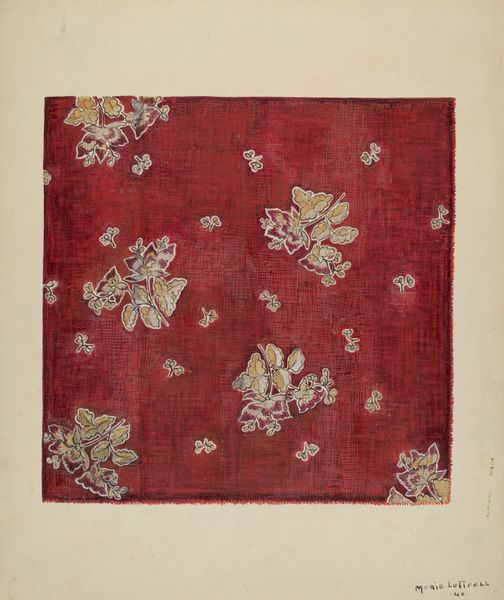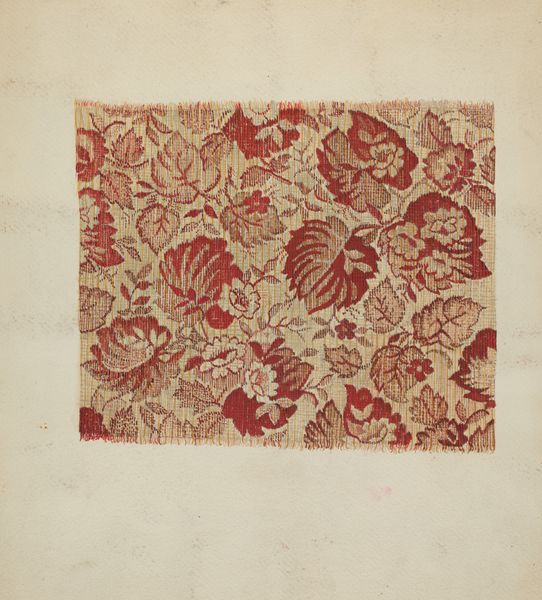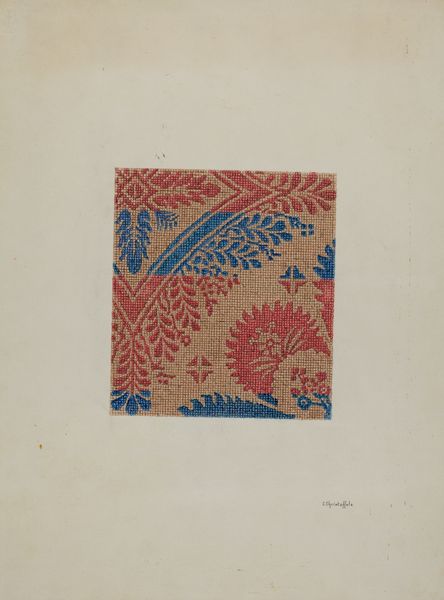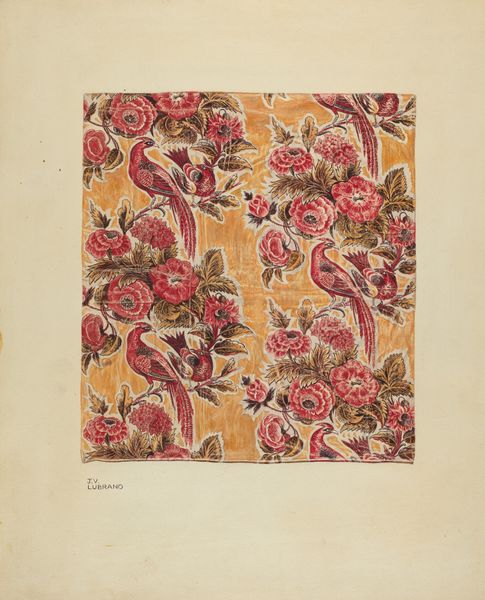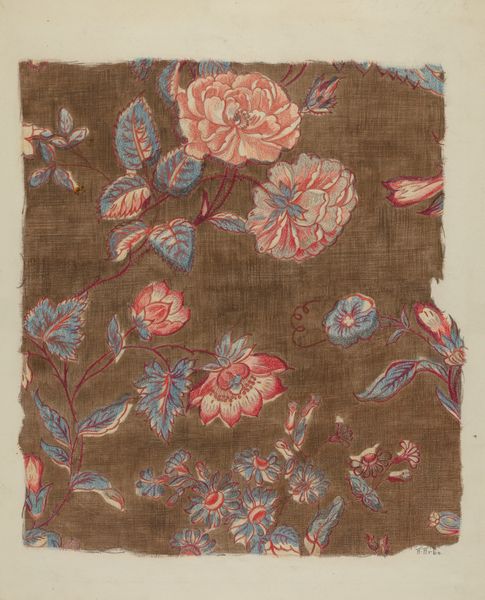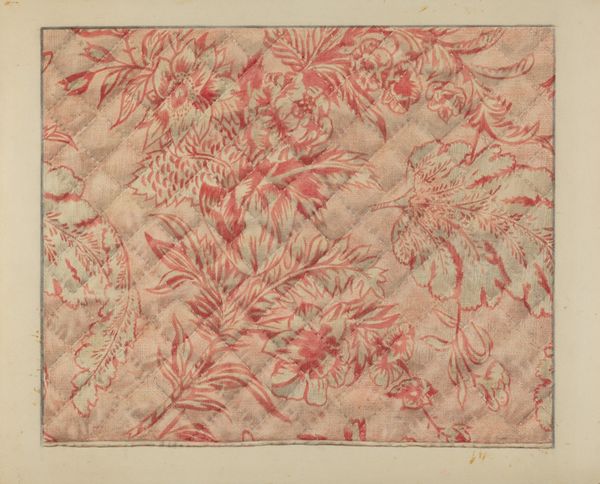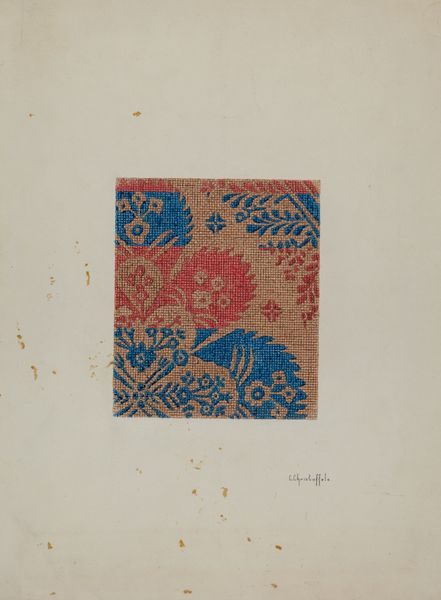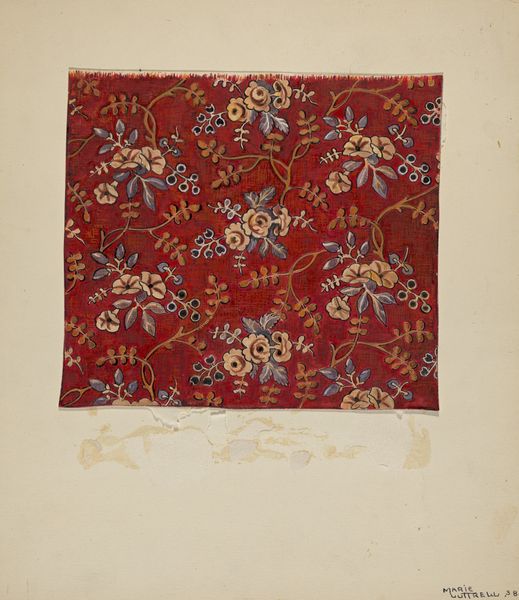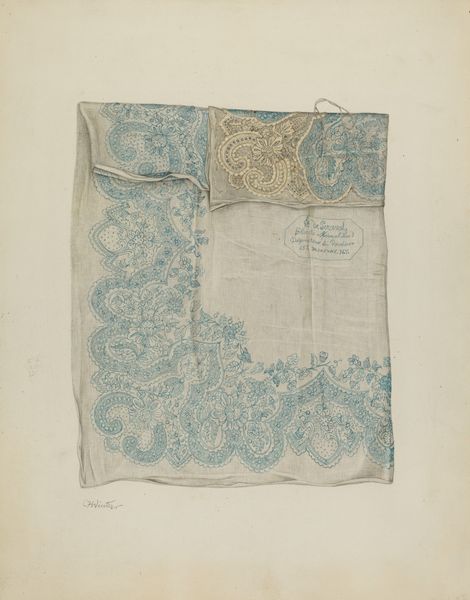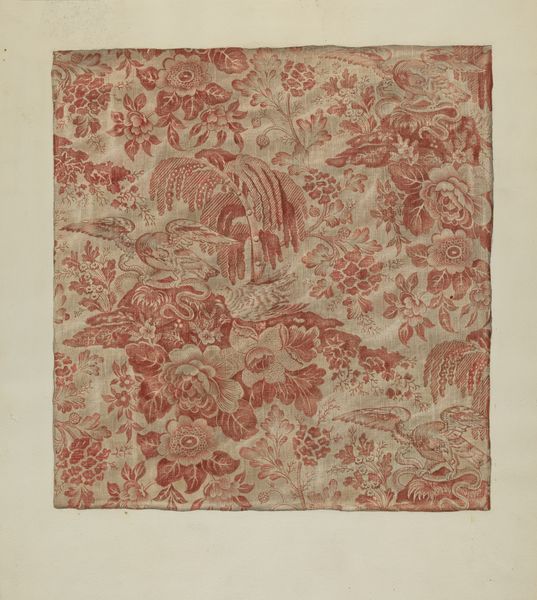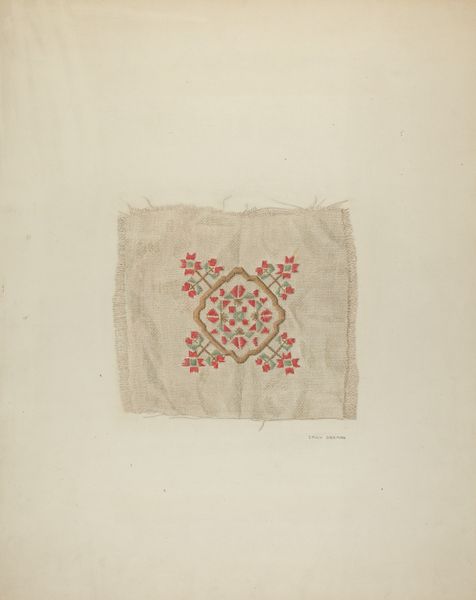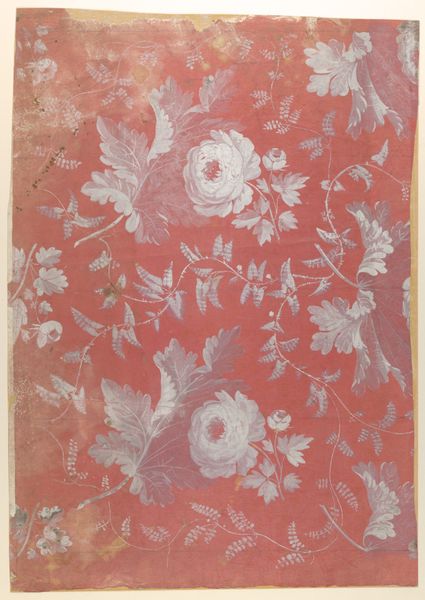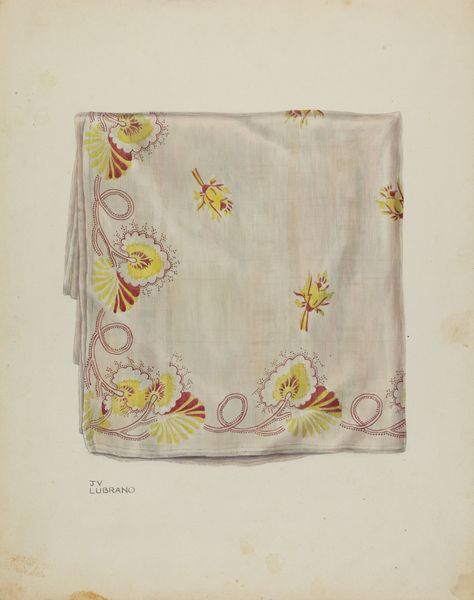
drawing, mixed-media, textile, watercolor
#
drawing
#
mixed-media
#
water colours
#
textile
#
watercolor
#
coloured pencil
#
line
#
genre-painting
#
decorative-art
#
realism
Dimensions: overall: 36.2 x 28.3 cm (14 1/4 x 11 1/8 in.) Original IAD Object: 29" wide; 31" long
Copyright: National Gallery of Art: CC0 1.0
Curator: Here we have a “Printed Textile” created around 1940. Its creation involves a medley of materials: watercolor, coloured pencil, drawing and other mixed media which all bring out the rich colour of the textile. Editor: The first thing that strikes me is how muted the colors are. The red isn’t vibrant; it feels almost aged, like something cherished yet worn. The floral pattern feels a bit sad or nostalgic somehow. Curator: Decorative art like this had a very specific role during that era. Textiles were not merely functional objects but could be artistic expressions intended to promote social cohesion after periods of economic instability and war. Items such as these represent a sort of democratizing of art—bringing beauty and handcrafted objects into the daily lives of ordinary people. Editor: That context really deepens the impact. To see something beautiful during periods of unrest can be considered an act of resilience and hope. Floral motifs, during these times, became coded symbols. Perhaps here they speak of fragility of peace or hope for a brighter future. Also, its form really catches my eye, it challenges a more conventional square format. Curator: Exactly! While rooted in tradition with its floral elements reminiscent of earlier decorative styles, there’s a conscious move to modernize. We see elements of realism, especially in the way the flower clusters are rendered but also a leaning towards more streamlined, decorative shapes that would suit the machine printing capabilities of the era. What this textile achieves is creating a space for artistic engagement and cultural expression in public and domestic spheres. Editor: Knowing it’s intended to be functional adds to its complexity. Is it for display? For use? Perhaps its primary purpose became secondary to its symbolic meaning. As a textile from the 1940s it makes one wonder how ideas of domesticity are expressed and imposed on women. I wonder how the design reflects this tension? Curator: Indeed, viewing through a gendered lens highlights important aspects of women’s labour within artistic and textile industries during that period, pointing to shifts in cultural norms and artistic representations during the early-to-mid 20th century. Editor: It does change how you read it, doesn't it? It's like a whisper from the past about resilience and resistance, all interwoven in those delicate flower patterns. Curator: A valuable insight and lens through which to view this item in all its context. Editor: Absolutely. And seeing it as an invitation for wider conversations about representation.
Comments
No comments
Be the first to comment and join the conversation on the ultimate creative platform.
